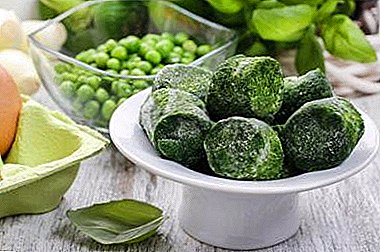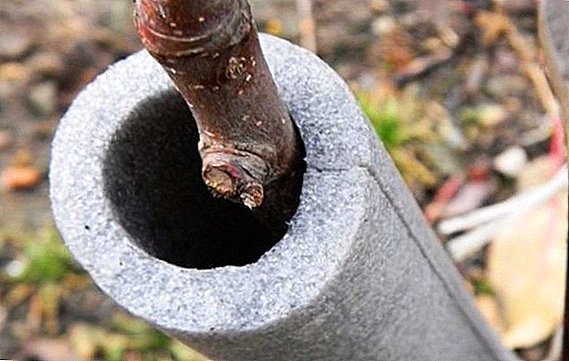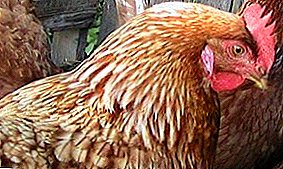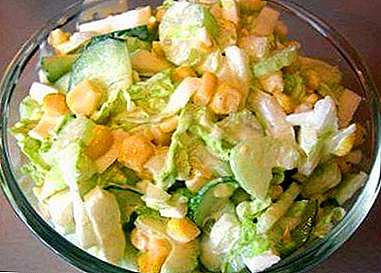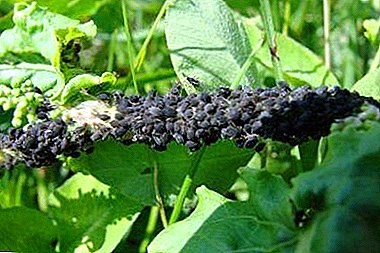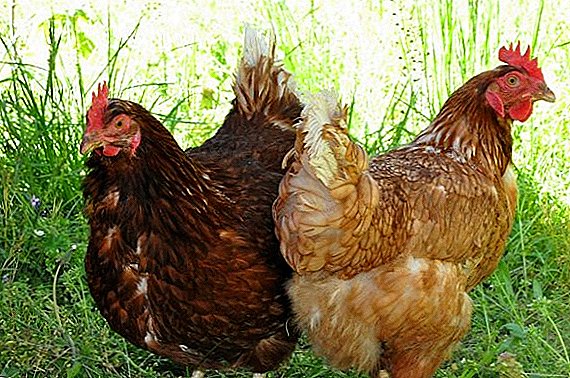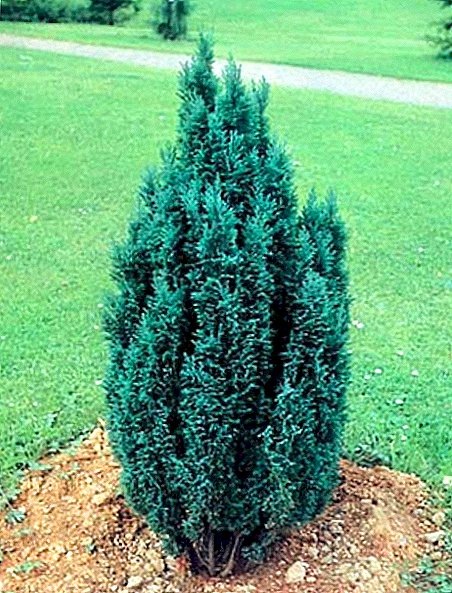 How nice it is when the courtyard of your house has a well-groomed appearance, has flower beds, lawns, evergreen trees and plants. One of the decorations of the courtyards, alleys, squares and parks - Lawson's cypress (Lawson).
How nice it is when the courtyard of your house has a well-groomed appearance, has flower beds, lawns, evergreen trees and plants. One of the decorations of the courtyards, alleys, squares and parks - Lawson's cypress (Lawson).
He appeared in our area relatively recently and immediately won the sympathy of both landscape designers and amateur gardeners, especially undersized varieties. Planting cypress and care for him are simple.
Botanical description
According to the description, Lawson's cypress is a pyramidal evergreen tree, very similar to thuja. Homeland - North America (California). In nature, it reaches a height of 70-80 m. It grows most often on mountain slopes, along river banks.
Grows in shady places, resistant to wind. Loves evenly moist soil of any type. Practically has no pests, is not subject to diseases. The root system is in the topsoil. May have a shrub look. It all depends on the variety.
The crown is usually extended downwards. The branches are flat, lower - almost on the ground. Needles in young plants needle, in mature - scaly species. The bark on the trunk has shades from red-brown to dark brown, almost black. 
Important! All parts of the plant are poisonous!
Cones small round, green, then brownish. Ripen in September, have winged seeds. Under each scale - two seeds.
Popular varieties of evergreen tree
Lawson's cypress is the most beautiful of its species. It has a large number of varieties, but not all of them are suitable for home and landscape cultivation.
Cypress Lawson has about 250 varieties. The most popular for designers and gardeners are decorative varieties that are best adapted to the climatic conditions.
Popular varieties:
Lawson's cypress "Yvonne" - the most beautiful yellow copy. Reaches 7-9 m. Fast-growing, conical shape. Does not change coloring in the winter. Cypress "Alyumi" attractive for its grandeur. Its maximum height is 10 m. The needles have a bluish-steel color. The branches are raised steeply.  Cypress "Elwoodi" attracts with its compactness. He is also with bluish gray-gray needles. Reaches a height of about 2 m.
Cypress "Elwoodi" attracts with its compactness. He is also with bluish gray-gray needles. Reaches a height of about 2 m. 
Learn more about Elwoodi cypress cypress.Cypress "Fraseri" - A low columnar plant. The needles are dark gray. Frost-resistant
 Cypress "Globoza" - dwarf tree. Within ten years, reaches a height of about 1 m. The branches are arranged horizontally. The needles are bluish-green.
Cypress "Globoza" - dwarf tree. Within ten years, reaches a height of about 1 m. The branches are arranged horizontally. The needles are bluish-green.  "Silver Queen" different crown color. Young shoots are yellow-green, the ends are cast in silver. Old branches are marble white. It grows up to 1 m in height. Cone-shaped.
"Silver Queen" different crown color. Young shoots are yellow-green, the ends are cast in silver. Old branches are marble white. It grows up to 1 m in height. Cone-shaped.  Loveson Cypress "Kolumnaris" - also tall look. Reaches 5-10 m. The branches are tightly pressed to the trunk. The needles are gray-blue.
Loveson Cypress "Kolumnaris" - also tall look. Reaches 5-10 m. The branches are tightly pressed to the trunk. The needles are gray-blue. 
Did you know? The famous ancient philosophers Plutarch recommended to write all the laws on cypress boards.
Where to plant a plant
The most popular cypress varieties are not particularly demanding to the conditions. That is why they have become popular in our latitudes, because any soil suits them, they tolerate moderate winters well. Can adapt to room conditions for the winter.
The plant will grow in latitudes where the temperature in winter does not fall below 25 ° C. Humidity should be high enough. It is best to plant cypress with green needles in slightly shaded places. He is very sensitive to the sun. Open sun can burn young shoots.  Plants with yellow, bluish, blue crown sun is not contraindicated. Cypress is sensitive to cold air currents. It is best to plant the trees in areas protected from the north winds. Cypress will be a wonderful decoration of the alleys of parks and squares, large courtyards, lawns.
Plants with yellow, bluish, blue crown sun is not contraindicated. Cypress is sensitive to cold air currents. It is best to plant the trees in areas protected from the north winds. Cypress will be a wonderful decoration of the alleys of parks and squares, large courtyards, lawns.
Planting and Breeding Rules
Almost all ornamental cypress species reproduce by seed and cuttings. It is best to buy a seedling in a garden nursery or flower shop.
Planting should be done only in the spring. Planted trees can be single, group and allene way. The pit should be deep enough and wide enough that the roots are located in it freely. Depth should be about 1 m. Drainage and fertilizer must be laid on the bottom.
First you need to water the ground in the pit to drainage lay down. Then place the seedling and cover it with earth. Pour again. When the earth crouches, sprinkle with dry soil. The roots should all go under the soil and pour on 15-20 cm.
If you decide to multiply cypress at home, you will have to work hard. One of the labor-intensive processes is reproduction by seeds. Collect the seeds you need in the fall, when the buds are ripe.
Next, you need to prepare the seeds. There is no stratification here. For cypress, it is better to use cold stratification, since in nature it will have to endure low temperatures.  To do this, you need to soak the seeds for a couple of hours in water, and then plant them in wet sand and place them in a cold place for two months. Sand during this time will have to periodically moisten. The temperature for cold stratification is about 5-7 ° C.
To do this, you need to soak the seeds for a couple of hours in water, and then plant them in wet sand and place them in a cold place for two months. Sand during this time will have to periodically moisten. The temperature for cold stratification is about 5-7 ° C.
The procedure must be carried out in February-March, so that in April-May it would be possible to transfer the capacity with seeds to a warm place for germination. Approximately in the middle of summer sprouts can be planted in the soil in a shaded place.
If in doubt, plant each seedling into a separate container for growing. Only after two years, the plant can be planted at a permanent place of growth.
In addition to cypress, the most popular evergreens also include: spruce, fir, juniper, boxwood, pine, yew, thuja.Cutting is a simpler way. Cuttings are cut at the top of the crown about 12-13 cm long. The needles are removed along the edge. You can hold the cuttings in a solution for root growth of 2-2.5 hours.
It is necessary to plant in a tank with good drainage, loose moist soil. Immerse in the ground by the needles - 3-4 cm. You can make a greenhouse, you can do without it. The plant will take root. As a result, you get a ready sapling. It is also possible to replant the seedling in open ground only after two years. 
Care features
Care for Lawson's cypress is simple. Three aspects are important in it: watering, fertilizer, pruning. Watering should be moderate but regular.
Important! Do not overdry and swampiness.
Since the plant loves humid air, in the hot season the air around the tree needs to be moistened. If it is not possible to water the plant often, it is necessary to mulch the soil with peat and sawdust under it.
Fertilizer should be a complex mineral fertilizer every spring. Be sure to loosen the soil after feeding. Crop cypress is also produced in the spring. First you need to remove the dry branches. Krona does not need to form.
Only if the branches are very much stretched, they can be a little pruned and pulled. If the crown is not symmetrical, in the "bald" places you can lubricate the stem with a special solution. It stimulates the growth of branches.
That's the whole care in the open air. If you are worried that the plants will not survive in the bitter cold, plant them in tubs and put them into the room for the winter. 
Did you know? Cypress needles have a pleasant aroma and fill the house with phytoncides that are extremely beneficial to the respiratory system.
So, if you plan to decorate your yard, garden, land, then you will not find a better plant than cypress. It will not only please the eye with a fluffy crown at any time of the year, but will also give an aesthetic and well-groomed look to your site as a whole, especially if you use a group or aerial landing.



